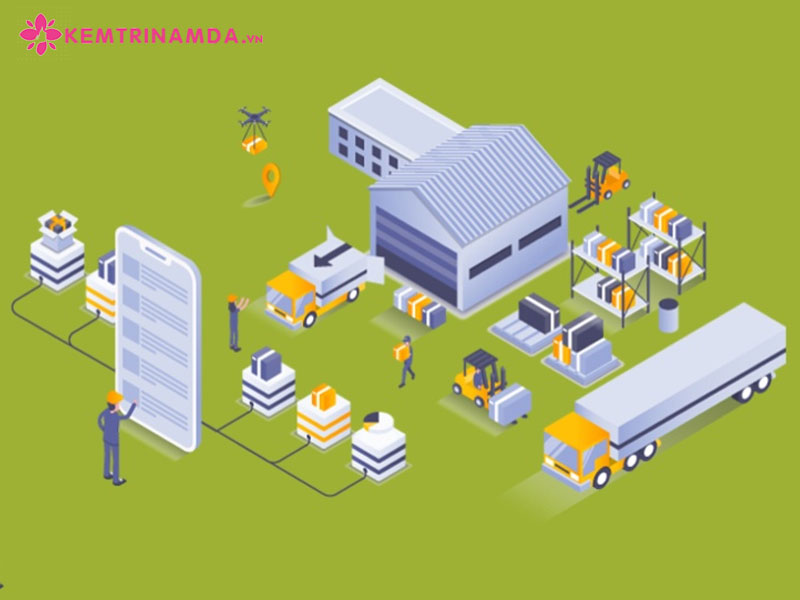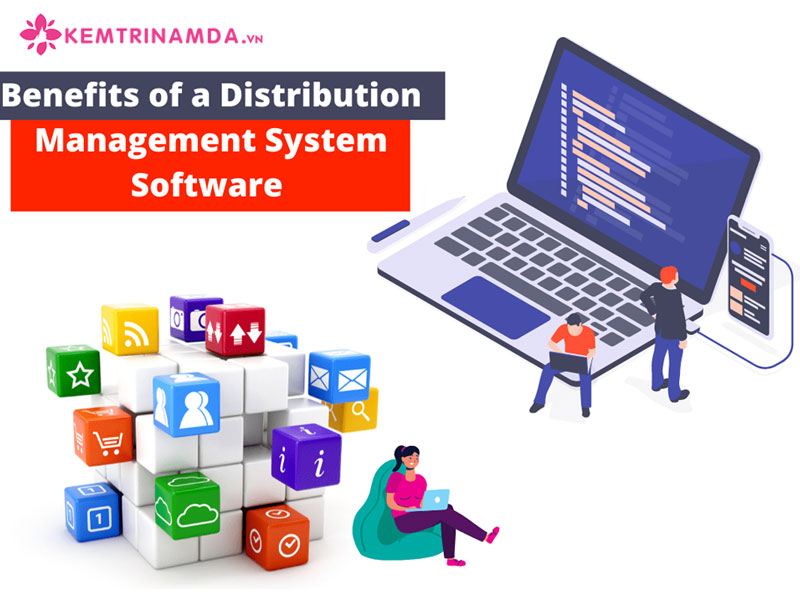The use of distribution management software has become essential for companies that distribute goods. Operations are intended to be streamlined and optimized in order to improve customer satisfaction and boost revenue. The purpose of distribution management software, its operating tenets, advantages, and drawbacks will all be discussed in this article. Furthermore, we’ll look at this technology’s potential in the future.

Definition of Distribution Management Software
Software for managing the delivery of items within a company is known as distribution management software or warehouse management software. By automating many of the steps required in the delivery of commodities, this software is made to assist organizations in improving their supply chain.
One cannot overestimate the significance of distribution management software to the distribution sector. Customers want things to be delivered quickly and effectively in the hectic business environment of today. Companies that can’t keep up with these demands run the danger of losing clients to rival businesses. By automating many of the distribution-related procedures, it enables firms to keep up with the pace of contemporary commerce and decreases the time and effort needed to deliver goods to customers.

Inventory management, order processing, shipping, and tracking are some of the major aspects of distribution management software. By supplying real-time visibility into inventory levels and order progress, these capabilities are intended to assist organizations in managing their supply chain more efficiently.
How Distribution Management Software works
Many of the procedures involved in the distribution of commodities are automated by distribution management software. This software often works with the enterprise resource planning (ERP) system already in place at a company, giving real-time visibility into inventory levels, order progress, and other important indicators.
In order to develop an efficient workflow for managing inventories, processing orders, and shipping goods, the program takes data from the ERP system. For instance, the software instantly verifies product availability when a new request is received by checking inventory levels. The software may automatically launch a buy order to restock the inventory if the item is not already in stock.

The software creates a shipping label once the item is prepared for shipping and then sends the package to the proper carrier. Customers may follow the progress of their orders with the help of the program, which can also provide real-time tracking information.
Examples include SAP Warehouse Management, Infor SCM, and Oracle WMS.
Benefits of Distribution Management Software
There are many benefits to using distribution management software. Some of the key benefits include improved efficiency, streamlined operations, better inventory management, and enhanced customer service.
Improved efficiency
Businesses can increase their productivity by automating several distribution-related tasks when they employ distribution management software. By doing so, manual inventory management, order processing, and product shipment are no longer necessary, freeing up time and resources for other operating areas.
Streamlined operations
It can assist firms in streamlining their operations by automating many of the distribution-related procedures. Cost savings, increased productivity, and better customer service can all result from this.

Better inventory management
Businesses may more efficiently manage their inventory thanks to this software, which offers real-time visibility into inventory levels. Businesses can lower their inventory carrying expenses and guarantee that they always have the goods their clients require in stock by doing this.
Enhanced customer service
By giving clients real-time tracking information, distribution management software can assist organizations in providing better customer care. Customers can follow their orders all the way through thanks to this, which can increase their pleasure and loyalty.
Distribution Management Software Challenges
While employing distribution management software has many advantages, there are some difficulties that firms could encounter. Costs associated with implementation, technological difficulties, and reluctance to change are a few of the major obstacles.
Implementation costs
For small organizations in particular, implementing distribution management software can be pricey. Businesses may need to spend money on hardware and training in addition to the software’s cost in order to make the most of the software.
Technical difficulties
Businesses could run into technical issues while implementing or using it since it can be complicated. Businesses without the technical know-how necessary to troubleshoot issues may find these challenges particularly onerous.
Resistance to change
Employee resistance to change is possible when firms implement this software because it might be a substantial change. Due to this, it may be challenging to completely reap the software’s benefits. To make sure that staff members feel at ease using the new system, further training and assistance may also be necessary.
Future of Distribution Management Software
The future of distribution management software is looking bright, driven by continuous advancements in technology and an increasing demand for more efficient supply chain management. Promising trends in the industry include the utilization of artificial intelligence and machine learning to streamline supply chain operations, the integration of blockchain technology to enhance transparency and security, and the growing adoption of cloud-based software solutions.
Future distribution management software is predicted to heavily rely on artificial intelligence and machine learning. With the aid of these technologies, firms may increase productivity and cut costs by real-time supply chain optimization and analysis of massive amounts of data.

Blockchain technology is also anticipated to become more significant in the distribution sector. Utilizing this technology can help businesses lower the risk of fraud and boost partner trust by bringing better transparency and security throughout the whole supply chain.
In the distribution sector, cloud-based software solutions are also growing in popularity since they have several advantages over conventional on-premise solutions. Cloud-based solutions can generally be used from any location with an internet connection, are more cost-effective, and are simpler to implement.
Conclusion
For companies that handle product delivery, distribution management software is a potent tool. This software can assist firms in increasing productivity, streamlining operations, better managing inventories, and offering better customer service by automating many of the distribution-related procedures. The benefits of this software are obvious, and the technology’s future appears promising despite some implementation and usage difficulties. Businesses who use the newest technologies will be better equipped to succeed in the years to come as the distribution industry continues to develop.
Follow Kemtrinamda.vn for more news.









